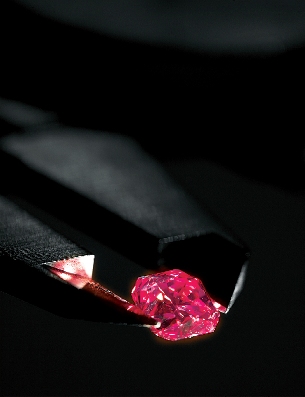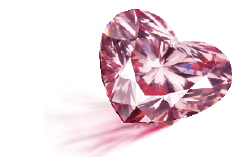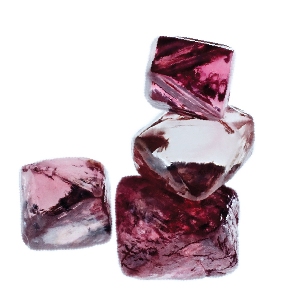Tender Loving: The Rio Tinto Pink Diamond Tender
April 28, 10
Despite the global economic downturn, Rio Tinto’s 25th Argyle Pink Diamonds Tender realized record prices in 2009. According to the company, the Tender attained “exceptional result[s] that [belied] the global financial crisis of the past 12 months.” As pink diamonds from Argyle become increasingly more rare – and desirable – IDEX Magazine editor-in-chief Danielle Max examines the Tender process and asks where prices are headed.
With production at Rio Tinto’s Argyle mine in
|
|
Each year, about 100 select clients, representing individual diamantaires, jewelry manufacturers and luxury retailers receive invitations to view the Tender diamonds in various global viewing locations. Included on the list of invitees are top-end jewelers (the pinks are sold in retailers such as Asprey in
Reflecting changing markets, the 2009 Tender was shown in Mumbai for the first time, with
Attesting to these changes, the Tender will not be shown in Mumbai in 2010, Archer says that it is not due to lack of interest. “We were not disappointed as the reaction to pink diamonds in
In another first, Rio Tinto is taking the to
Like the auction scene in general, Rio Tinto has seen a shift in the demographics of those who are buying the diamonds, with increased interest from the emerging markets of
And they are doing so at increasingly higher prices. Since the first Argyle Pink Diamonds Tender was held in
This rarity, she says, plays the dominant role in driving the value of Argyle pink diamonds to new heights. “The chances of any future mine discovery replicating the unique properties of the Argyle mine, is extremely low. Currently there are no other pink diamond mines or deposits and even if another deposit of pink diamond-bearing ore is discovered, it takes on average 10 years for a mine to proceed from discovery to production.”
On the demand side, Archer says, there have been a number of developments since the 1980s in areas such as diamond cutting, marketing and grading that have helped put pink diamonds squarely in the public eye. “Historically, coloured diamonds were manufactured in the same shapes and cutting styles as their white diamond counterparts. That began to change in the mid-1980s as the supply of a small, but consistent number of pink diamonds began to emerge from the Argyle mine. Diamond cutters began to experiment with ways to obtain a better yield (weight) from the rough pink diamond and improve and intensify its colour. These innovations laid the foundations for what is now accepted practice for cutting all coloured diamonds.”
| |
In addition, she says, greater coverage by the mainstream media of pink diamond purchases and adornment by celebrities has been particularly important to the growth in consumer awareness of pink diamonds. Despite the popularity of pink diamonds with celebrities (who can forget the $2.5 million price tag for the 6 carat emerald cut pink diamond ring Ben Affleck gave to then-fiancé Jennifer Lopez?) individual buyers, even those with famous names, cannot attend the Tender and must be represented by an invitee.
While Rio Tinto keeps information about the prices a closely guarded secret, perhaps to add to the allure and exclusivity of the diamonds, Archer said in a press release following the close of the 2009 sale that the results, "demonstrated a significant global reach with very strong price appreciation."
As for what happens to the diamonds after they are purchased through the Tender process, Archer says it is difficult to know, although clients often inform Rio Tinto when an important stone passes through to its ultimate owner – who run the gamut of investors, collectors, celebrities and other high-net-worth individuals. “I know that some of our customers like to hold these stones for their own investment value and others like to trade. Some stones are set aside for important jewellery pieces that can take months to come to fruition. I also know that one of the 2008 hero stones, “Aphrodite” was in a ring and gifted for Christmas within weeks of the Tender closing.”
It is a rare person who can boast that they received an Argyle pink diamond for Christmas. The number of stones offered at each Tender has varied over the years from 40 to 60 stones, depending on each year’s particular production. At the time of publication, the company was finalizing its selection for the 2010 Tender, which Archer says will number from 40 to 50 lots.
|
|
In 2009, 43 stones were sold, including four heart-shaped gems. The Tender’s showpiece was an intense pink, heart-shaped stone named "Argyle Amour™." With a weight of 2.61 carats, it was the most valuable heart-shaped pink diamond ever produced from the mine.
Although it is too early in the selection process to say what the “stars” of the 2010 auction will be, Archer alluded to an extraordinary diamond. “An exquisite, vivid 2.02 carat round came off the wheel last week amidst much excitement, and is currently being graded by our team. It is captivating and certain to be a hero stone this year.”
While there are no estimates for the price of diamonds once mining ends, Archer does point out that there are only around 500 more Tender-quality diamonds available between now and 2018, and, like in any auction, once they are gone, they are gone.


